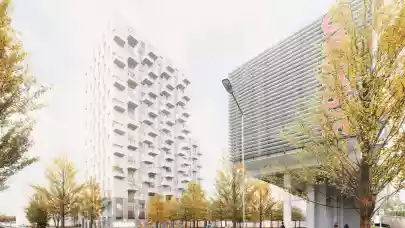
Despite record low vacancy levels in Budapest and an increasingly landlord-friendly leasing environment, industry commentators have warned of an imminent oversupply around the corner. But there is no need to panic just yet, suggests Orsolya Hegedűs and Mike Edwards at Cushman & Wakefield, Hungary.
Market concern is understandable; market experts suggested that next year’s supply could exceed 300,000 sqm - the last time supply reached these sorts of levels Hungary was in the midst of the triple whammy of the global financial crisis, a poorly performing domestic economy and fundamentally unsustainable real estate dynamics. It is worth remembering that total gross take up was actually less than supply; in other words, if every tenant taking space - were they new to the market, expanding or renewing their lease - had moved to a brand new building, there would still have been surplus supply. Such dynamics were the main cause of vacancy rates rising over and above 25%.
“Budapest’s dynamics have moved on since 2009. We can generally expect gross take-up to exceed 500,000 sqm each year and absorption will typically be around a quarter to a third of this amount. In other words, there is an annual requirement of approximately 150,000 sqm of new supply per year – and this is expected to rise. Over a six or seven year period we saw very little in the way of development (an average of 60,000 sqm per year between 2011 and 2016), resulting in a massive undersupply of good quality, and well located stock. This is a very different situation to that which occurred in Prague and Warsaw, which saw a much faster development recovery and saw first generation stock substantially replaced over this period”, said Orsolya Hegedűs MRICS, Associate, Head of Research and Consultancy at Cushman & Wakefield Hungary.
In an increasingly competitive race for the best employees, the likes of GE, Morgan Stanley and BlackRock realise that a high quality working environment is critical for both attracting and retaining staff. A disproportionate level of Budapest’s existing stock has not aged particularly well and needs replacing with modern, well specified and located buildings.
“So what of this supply of 300,000 sqm? Closer investigation shows actual supply will be some way short of this. Developers tend to be optimistic in estimating the delivery of their schemes and already over 70,000 sqm of the projected supply has been deferred until 2019 according to the latest reported data. Furthermore, this projection includes WING’s once in a generation relocation of Magyar Telekom to a bespoke, consolidated 55, 000 sqm base - not a typical delivery in terms of either supply or leasing. Finally, some of this stock is located on the periphery and will not be a direct competitor to typical Budapest stock. The true delivery of 2018 is therefore closer to 175,000 sqm – a fair comparison to expected annual absorption – and a delivery figure we would expect to see replicated in 2019”. – added Orsolya Hegedűs.
“Whilst concern has been expressed about the impact of Budapest’s “mega schemes” such as BudaPart and Agora, the scale of these schemes is misunderstood. These schemes are developed by highly experienced developers who will phase development according to demand and the performance of previous phases; we cannot expect to see hundreds of thousands of square metres suddenly deposited on the market to the detriment of all other schemes”. – commented Mike Edwards MRICS, Partner, Head of Capital Markets at Cushman & Wakefield Hungary.
“Aside from developer’s intentions, there are other factors which will keep supply in check. Bank finance is still considerably more challenging to obtain than in the pre-crisis world and there is also a labour shortage – a factor that has contributed to significant rising development costs. In order for future developments to be profitable, rents will need to increase – yet rental levels of current stock and that which is already under development will keep rents under control. Invariably, there will be casualties of new supply, but these buildings will be those that are flawed in design, age, specification or location. As occurs in all cities, such buildings will need to adapt to a new environment and may even go to alternative use - but the current development boom will improve our city and its working environment, so good quality stock has nothing to fear”. – concluded Mike Edwards.



